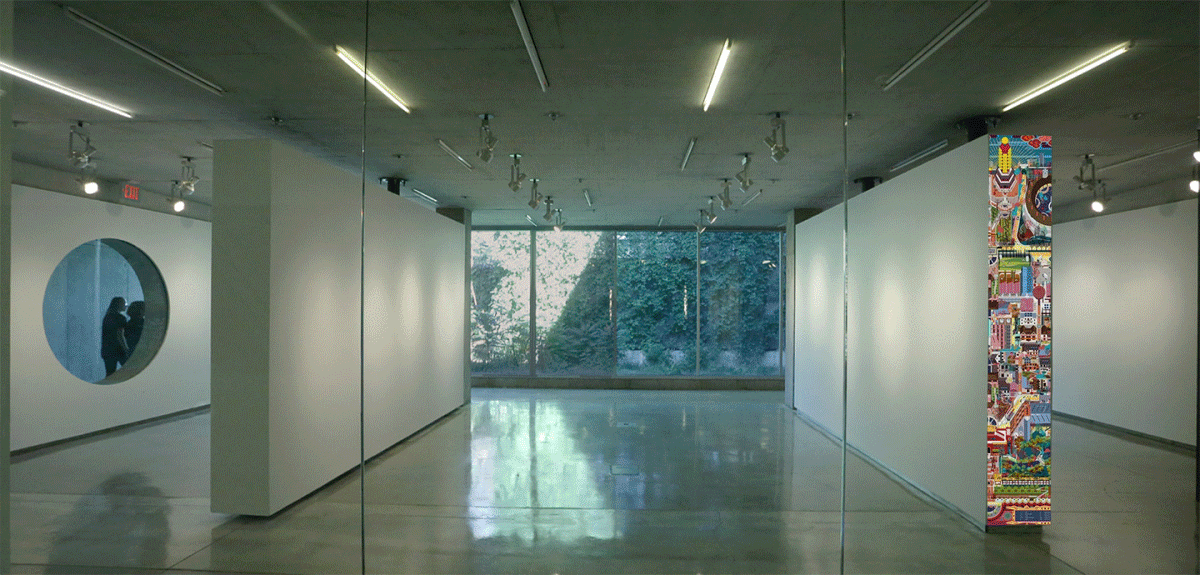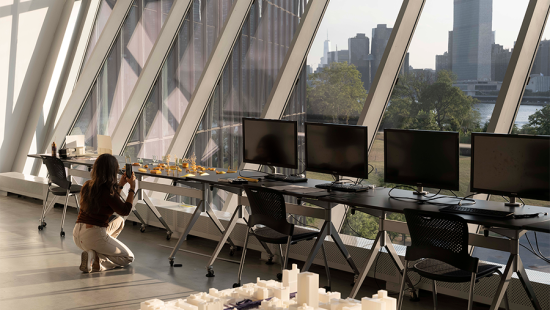Innovation at the Fringe: The Transformative Design and Architecture of the Rural-Urban
The first of two Preston Thomas Memorial Symposia this spring brings leading architects, designers, urban theorists, and researchers together across continents to discuss innovations generated at the intersection of the urban and the rural.

Work by Bangkok Project Studio (Elephant Theatre). image / provided
Worldwide, geographical zones that defy the neat label of urban or rural are increasingly the predominant context for innovation in design, building, and development. "FRINGE: New Centers for Architecture and Urbanism," the semester's first of two Preston Thomas Memorial Symposia, will interrogate these multivalent rural-urban areas, and adds an accompanying exhibition that will help unpack their spatial, ecological, and technological capacities, revealing strategies that strive to be more environmentally conscious, socially equitable, and architecturally adaptive.
Where the Action Is
Organized by Architecture Assistant Professor Leslie Lok with coordination by Design Teaching Fellow Hanxi Wang, the two-day symposium happening in early March will host some of the world's leading architects, designers, urban theorists, and researchers in order to fully explore spaces that operate beyond the binary of urban versus rural, particularly in East and Southeast Asia. A keynote presentation, delivered by Lu Wenyu and Wang Shu of Amateur Architecture Studio, and three panels will take place in person both in the U.S. and China, which serves to situate the conversation in, or close, to context. The proceedings will also be accessible virtually.
"Currently, the rural-urban is where the action is. It produces this ambiguous range of landscapes that can be characterized as neither distinctly urban nor distinctly rural,” Lok emphasized. "Therefore, it is important to understand what the agencies and narratives are that are driving the transformation and how these in-between spaces are serving as a global engine for urban growth."
The symposium will open in Beijing on March 2 (8 p.m. ET), co-hosted with the Cornell China Center, and continue on March 3 (2 p.m. ET) in Milstein Auditorium at Cornell's College of Architecture, Art, and Planning (AAP).
The exhibition plans include special AR components.

This will provide an immersive experience that will allow visitors to view and interact with specific aspects of the exhibited work at full scale.

In addition, the display will showcase research into topics such as the work done by Stephen Cairns / Future Cities Laboratory into "agropolitan" land-use.

The exhibition plans include special AR components.
Taking a Closer Look
In addition to the symposium sessions, an exhibition in AAP's Bibliowicz Family Gallery (February 28–March 23), curated around the touchstones of material, technology, and agency, will allow a dive into an even more expansive range of projects across geographical and cultural contexts in order to deeply explore different innovations. Images and large-scale drawings will showcase the specific construction details and material systems unique to each project's particular context. Furthermore, special AR components, which include 3D-scanned models and material samples, spaces, and urban landscapes, provide an immersive experience that will allow visitors to view and interact with specific aspects of the exhibited work at full scale.
Traditional House of the Future by Lidia Ratoi and John Lin. image / provided

Work by Amateur Architecture Studio. image / provided

Work by DnA Design and Architecture (Quarry #8 during construction). image / provided

Work by 1+1>2 Architects (Suoi Re Community House during construction). image / provided

Work by SUP Atelier (Village Lounge of Shangcun). image / provided

Traditional House of the Future by Lidia Ratoi and John Lin. image / provided
The Takeaway
"These rural-urban contexts each have their own unique conditions, material resources, and local community needs, often offering exciting new modes of hybrid construction methods and design making that arise out of constraints and limitations, as well as certain opportunities the rural offers that the urban lacks," said Lok.
Wang further emphasized that "this symposium is exciting because we are bringing this ambiguous territory to the forefront to highlight its capacity as a fertile seedbed for design innovation. Usually, the rural is subjugated. We're saying that this relationship is actually much more complex, and that the rural has influence and creative input as far as where the future might lead."









